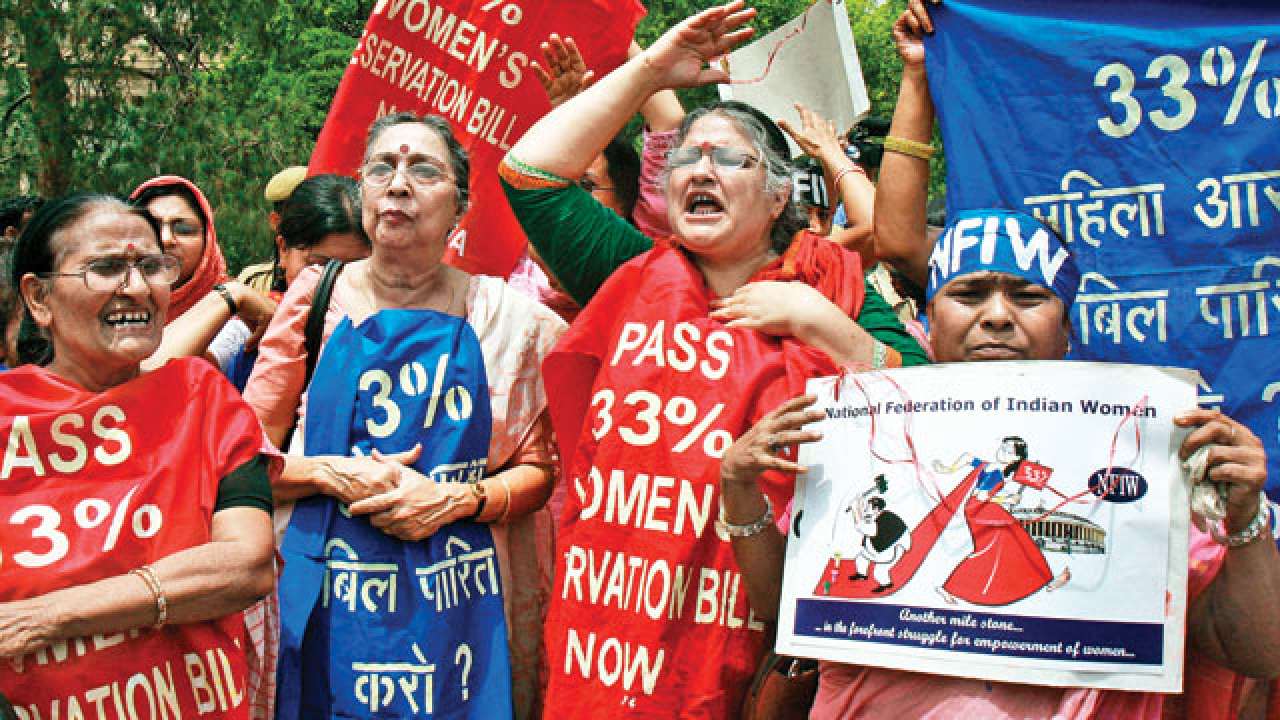
Congress President Sonia Gandhi’s letter to Prime Minister Narendra Modi urging him to “get the Women’s Reservation Bill passed in the Lower House” is well timed. As Mrs Gandhi rightly points out in her two-paragraph letter, the Bill was passed by the Upper House in 2010. It has, she writes, since “languished”. What Mrs Gandhi does not, of course, point out is that it has languished for seven years largely because of her Yadav allies — principally Lalu Prasad Yadav (RJD) and Mulayam Singh Yadav (SP).
The BJP hasn’t been blameless. A strong undercurrent of opposition runs through sections of the party wary of sacrificing their parliamentary seats to women candidates. After taking office in May 2014, the BJP has made little concerted effort to pilot the Women’s Reservation Bill through the Lok Sabha. With over 330 MPs, the BJP-led NDA could pass the Bill — if it had the will. With Congress support now placed in writing by Mrs Gandhi, the Bill would sail through the Lower House.
Panchayats and other local bodies already have 33 per cent representation for women. Some zilla parishads mandate 50 per cent representation for women. In sharp contrast, the ratio of women in the current Lok Sabha is just 11 per cent. The Women’s Reservation Bill was first introduced in Parliament by the HD Deve Gowda government on September 12, 1996. It has since undergone several textual changes, but the central premise remains unchanged: One-third of the Lok Sabha’s 543 constituencies must be reserved for women.
Sharad Yadav was among the first — and most crass — opponents of the Bill. He infamously said it would ensure the entry of only ‘parkati mahilaen’ (short-haired women) into parliament. The insinuation: Wealthy urban women would corner the 33 per cent women’s quota in Parliament. Lalu Prasad Yadav, a firm Congress ally through the decades, was another vehement opponent. Along with Mulayam Singh Yadav, yet another Congress acolyte, he engineered a poison pill to kill the bill by demanding a quota within 33 per cent for Dalits and OBCs. Whenever attempts were made to table the Bill, the Yadav misogynists stepped in — often violently. An RJD MP once snatched a copy of the Bill from the Speaker and tore it up.
In 2010, the BJP, Congress and the Left, in a rare display of solidarity, managed to get the Bill passed amidst an uproar and scuffles in a chaotic Rajya Sabha chaired by the ineffectual Hamid Ansari. That is where the women’s Reservation bill rests today. There has been little political appetite among the political class, left, right or centre, to push the Bill through the Lok Sabha.
Mrs Gandhi’s letter sets the cat among the pigeons. It’s not enough for the BJP to pour scorn over her timing or intent. The timing may be expedient and the intent suspect. The facts , though, are incontrovertible: The BJP-led NDA has the numbers to finally pass the Bill in the Lok Sabha after its tortuous 21-year journey. Niggling points of contention over the contents of the Bill can be overcome. For example, the Bill recommends constituency reservation by rotation for 15 years after which the Bill would lapse. Critics argue that rotating constituencies every 15 years (three Lok Sabha terms) would reduce the women MPs’ incentive to nurture their constituencies. That ignores the fact that term limitations operate successfully in democracies around the world without affecting lawmakers’ performance.
However, the Bill needs to be amended so that it does not lapse after 15 years (as envisaged in the current version) but be a permanent legislation. Other objections such as “short-haired” urban women dominating the 33 per cent quota can be dismissed. There is, of course, the danger that male politicians will nominate surrogates — wives, daughters, and other female relatives — to undermine the purpose of the Bill: Empowering women in politics. But even without reservations, the scourge of dynasty has for years sent women of uneven quality to Parliament. Reservation would at least democratise the process.
While India has had two women speakers of the Lok Sabha — Meira Kumar and Sumitra Mahajan — in quick succession, neither has proactively sought to place the Women’s Reservation Bill as a centrepiece of parliamentary reform. India has a fine record of women occupying positions of high public office, ranging from Prime Minister Indira Gandhi to President Pratibha Patil. That needs to percolate through to the grassroots, bypassing dynasty and tokenism.
The BJP-led NDA has an opportunity to take an important legislative step towards gender equality. Global comparisons aren’t always relevant but in this case it’s worth pointing out that India, at 11 per cent, has among the lowest representation of women lawmakers. In Sweden’s lower house 44 per cent of lawmakers are women. In Britain’s House of Commons 32 per cent are women; and in France 39 per cent of its lawmakers are women. Even in developing counties like Namibia and Mozambique the ratio of women in Parliament is 40 per cent.
It is time Indian women receive the same legislative rights as their counterparts around the democratic world.
The writer is author of The New Clash of Civilizations: How The Contest Between America, China, India and Islam Will Shape Our Century